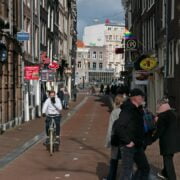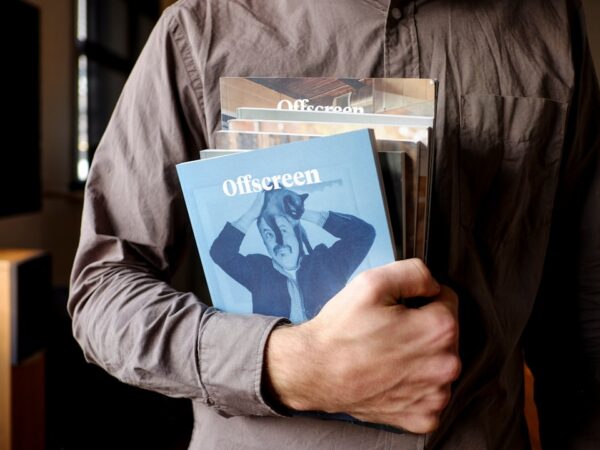
Books to Films: 5 Must-Reads
Book-to-film adaptations have become increasingly popular in recent years. From beloved classics to best-selling novels, audiences are eager to see their favorite stories come to life on the big screen. But what goes into the process of adapting a book into a movie? It’s not as simple as just transferring the words from the page to the screen. Filmmakers face a unique set of challenges and opportunities when bringing a book to life, and it is this delicate balance that can make or break an adaptation.
Key Takeaways
- -Adapting books into films presents both challenges and opportunities
- -Books make great movies because of their powerful storytelling
- -Top book-to-film adaptations include To Kill a Mockingbird, The Godfather, The Shawshank Redemption, The Silence of the Lambs, and The Lord of the Rings Trilogy
- -These adaptations successfully capture the essence of the original books
- -Books and films are a perfect match for storytelling and entertainment.
The Art of Adaptation: Challenges and Opportunities
Adapting a book into a movie is no easy task. Filmmakers must condense hundreds of pages of text into a two-hour film, while still capturing the essence of the story and characters. This often means making difficult decisions about what to include and what to leave out. Additionally, filmmakers must find creative ways to translate the written word into visual storytelling. They must consider how to visually represent the emotions, settings, and action described in the book.
However, with these challenges come opportunities for filmmakers to enhance the story in ways that the written word cannot. Through visual effects, cinematography, and sound design, filmmakers can bring a new dimension to the story, immersing audiences in the world of the book in a way that words alone cannot achieve. They can also make changes or additions to the story that may enhance its impact on screen. While purists may argue that these changes can detract from the original source material, they can also provide a fresh perspective and new insights for both fans of the book and newcomers to the story.
The Power of Storytelling: Why Books Make Great Movies
Books have long been hailed as one of the most powerful storytelling mediums, and it is this power that makes them so well-suited for adaptation into film. Books often offer a depth and complexity of characters and plot that can be difficult to fully capture on screen. Through the written word, authors can delve into the inner thoughts and motivations of their characters, providing readers with a deeper understanding and connection to the story.
This emotional connection that readers have with books is another reason why they make great movies. When a beloved book is adapted into a film, audiences already have a pre-existing attachment to the story and characters. They have imagined what the world looks like, how the characters sound, and how they interact with each other. Seeing these imagined worlds and characters come to life on screen can be a powerful and emotional experience, deepening the connection that audiences have with the story.
Must-Read Book-to-Film Adaptations: A Brief Overview
| Book Title | Author | Year Published | Movie Title | Director | Year Released |
|---|---|---|---|---|---|
| The Godfather | Mario Puzo | 1969 | The Godfather | Francis Ford Coppola | 1972 |
| The Silence of the Lambs | Thomas Harris | 1988 | The Silence of the Lambs | Jonathan Demme | 1991 |
| The Lord of the Rings | J.R.R. Tolkien | 1954 | The Lord of the Rings: The Fellowship of the Ring | Peter Jackson | 2001 |
| The Hunger Games | Suzanne Collins | 2008 | The Hunger Games | Gary Ross | 2012 |
| To Kill a Mockingbird | Harper Lee | 1960 | To Kill a Mockingbird | Robert Mulligan | 1962 |
There have been countless successful book-to-film adaptations over the years, but here are just a few that stand out as particularly impactful:
1. To Kill a Mockingbird by Harper Lee: This classic novel was adapted into an equally iconic film in 1962. The story follows Scout Finch, a young girl growing up in the racially charged South during the 1930s. The film beautifully captures the themes of racial injustice and moral courage that made the book so powerful.
2. The Godfather by Mario Puzo: Mario Puzo’s novel about a powerful Italian-American crime family was brought to life in Francis Ford Coppola’s 1972 film. The movie is known for its iconic scenes and unforgettable performances, particularly Marlon Brando as Don Vito Corleone.
3. The Shawshank Redemption by Stephen King: Stephen King’s novella about a man wrongfully imprisoned for murder was adapted into a critically acclaimed film in 1994. The movie explores themes of hope, friendship, and redemption, leaving a lasting impact on audiences.
4. The Silence of the Lambs by Thomas Harris: Thomas Harris’ psychological thriller about an FBI trainee and a cannibalistic serial killer was adapted into an Oscar-winning film in 1991. The movie is known for its intense performances, particularly Anthony Hopkins as the chilling Dr. Hannibal Lecter.
5. The Lord of the Rings Trilogy by J.R.R. Tolkien: J.R.R. Tolkien’s epic fantasy trilogy was brought to life in Peter Jackson’s film adaptation. The movies are known for their stunning visuals, epic battles, and intricate world-building, making them a cinematic masterpiece.
#1: To Kill a Mockingbird by Harper Lee
“To Kill a Mockingbird” is a classic novel written by Harper Lee and published in 1960. It tells the story of Scout Finch, a young girl growing up in the racially charged South during the 1930s. The book explores themes of racial injustice, moral courage, and the loss of innocence.
In 1962, the novel was adapted into an equally iconic film directed by Robert Mulligan. The movie starred Gregory Peck as Atticus Finch, Scout’s father and a lawyer who defends a black man accused of raping a white woman. The film beautifully captures the themes and messages conveyed in the book, highlighting the importance of standing up for what is right in the face of adversity.
#2: The Godfather by Mario Puzo
“The Godfather” is a novel written by Mario Puzo and published in 1969. It tells the story of the Corleone family, an Italian-American crime family headed by Don Vito Corleone. The book explores themes of power, loyalty, and the consequences of violence.
In 1972, Francis Ford Coppola adapted the novel into an iconic film starring Marlon Brando as Don Vito Corleone. The movie is known for its memorable scenes and unforgettable performances, particularly Brando’s portrayal of the powerful and enigmatic mafia boss. The film captures the essence of the book, delving into the complex relationships and moral dilemmas faced by the Corleone family.
#3: The Shawshank Redemption by Stephen King
“The Shawshank Redemption” is a novella written by Stephen King and published in 1982. It tells the story of Andy Dufresne, a man wrongfully imprisoned for murder, and his friendship with fellow inmate Red. The novella explores themes of hope, friendship, and the power of the human spirit.
In 1994, the novella was adapted into a critically acclaimed film directed by Frank Darabont. The movie stars Tim Robbins as Andy Dufresne and Morgan Freeman as Red. The film captures the emotional impact of the story and characters, leaving a lasting impression on audiences. It is often hailed as one of the greatest films of all time.
#4: The Silence of the Lambs by Thomas Harris
“The Silence of the Lambs” is a novel written by Thomas Harris and published in 1988. It tells the story of Clarice Starling, an FBI trainee who seeks the help of incarcerated serial killer Dr. Hannibal Lecter to catch another serial killer known as Buffalo Bill. The novel is a psychological thriller that delves into the minds of both Starling and Lecter.
In 1991, the novel was adapted into an Oscar-winning film directed by Jonathan Demme. The movie stars Jodie Foster as Clarice Starling and Anthony Hopkins as Dr. Hannibal Lecter. The film captures the psychological thriller elements that made the story so gripping, with Hopkins delivering a chilling performance as the cannibalistic serial killer.
#5: The Lord of the Rings Trilogy by J.R.R. Tolkien
“The Lord of the Rings” is a fantasy trilogy written by J.R.R. Tolkien and published between 1954 and 1955. The books tell the epic story of Frodo Baggins, a hobbit who embarks on a quest to destroy the One Ring and save Middle-earth from the dark lord Sauron. The trilogy is known for its intricate world-building, complex characters, and epic battles.
In the early 2000s, Peter Jackson adapted the trilogy into a series of films that became a cinematic masterpiece. The movies are known for their stunning visuals, breathtaking landscapes, and epic battle sequences. They capture the scale and scope of Tolkien’s world, immersing audiences in the fantastical realm of Middle-earth.
Books and Films: A Match Made in Heaven
Books and films are two distinct storytelling mediums, each with their own unique strengths. Books allow readers to use their imagination to create vivid worlds and characters, while films can bring these imagined worlds to life through visual storytelling. When a beloved book is adapted into a film, it can provide a new perspective and new insights for both fans of the book and newcomers to the story.
The continued popularity of book-to-film adaptations is a testament to the power of storytelling. Audiences are drawn to these adaptations because they offer a chance to see their favorite stories come to life on the big screen. Whether it’s a classic novel or a best-selling thriller, book-to-film adaptations have the power to captivate audiences and leave a lasting impact.
In conclusion, the process of adapting a book into a movie is not without its challenges, but when done well, it can result in a powerful and memorable cinematic experience. Books and films are a match made in heaven, each offering their own unique strengths as storytelling mediums. As long as there are great stories to be told, audiences will continue to flock to theaters to see their favorite books come to life on screen.
FAQs
What are some popular books that were made into films?
Some popular books that were made into films include “The Lord of the Rings,” “Harry Potter,” “The Hunger Games,” “The Fault in Our Stars,” “The Great Gatsby,” and “To Kill a Mockingbird.”
Why are books often adapted into films?
Books are often adapted into films because they already have a built-in audience and a pre-existing story that can be translated onto the screen. Additionally, films can bring a new visual and emotional dimension to the story.
Are film adaptations always faithful to the original book?
No, film adaptations are not always faithful to the original book. Changes may be made to the plot, characters, or setting to better suit the medium of film or to appeal to a wider audience.
Which is better, the book or the film adaptation?
This is subjective and depends on personal preference. Some people prefer the depth and detail of the book, while others enjoy the visual and emotional impact of the film adaptation.
Do authors have a say in the film adaptation of their book?
Authors may have some input in the film adaptation of their book, but ultimately the decisions are made by the filmmakers and studio executives. Some authors may have more control if they are also involved in the screenwriting or production process.


















